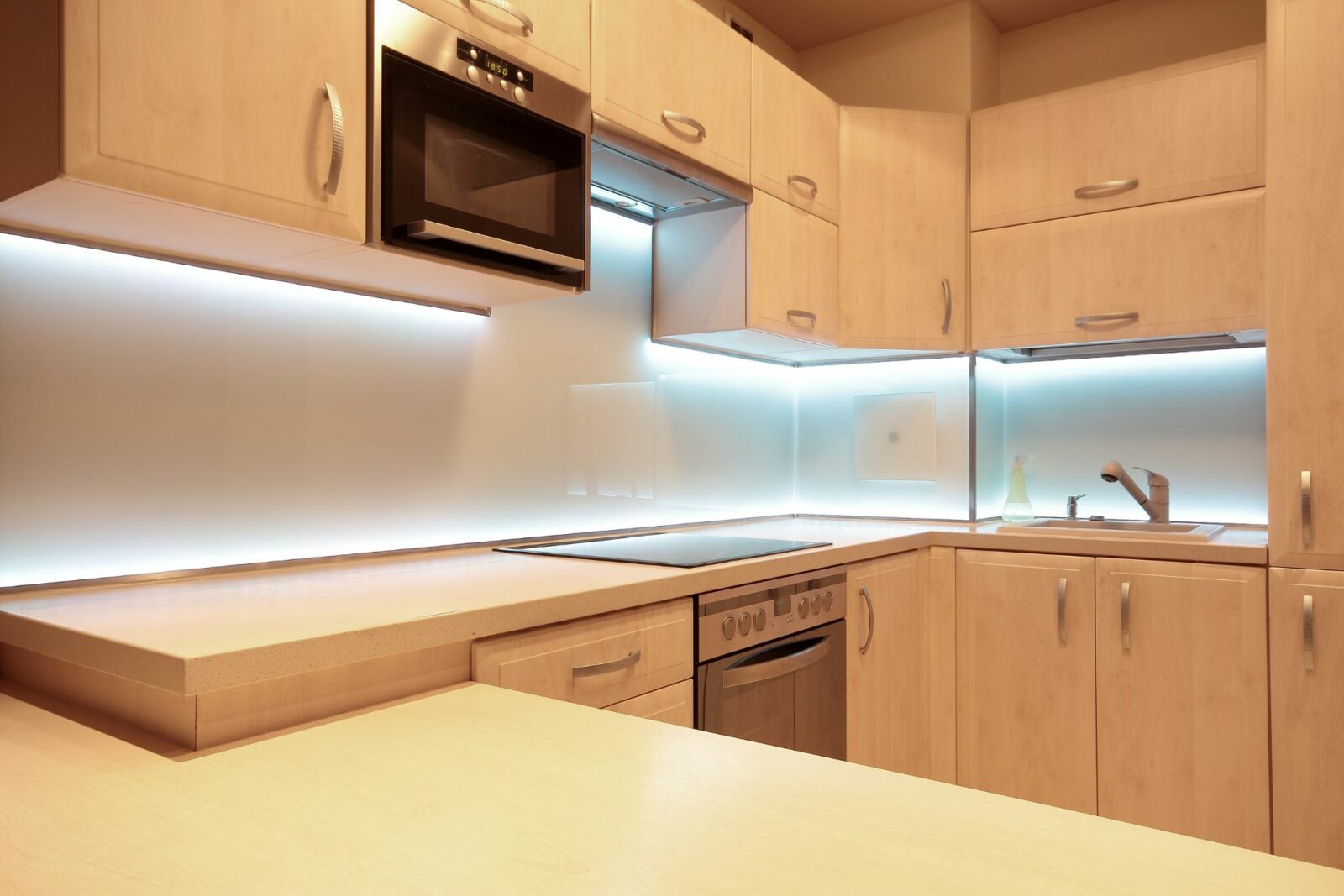Cost Comparison and Savings: Change Under Cabinet Fluorescent Light To Led

Switching from fluorescent to LED under-cabinet lighting in your Medan home might seem like a small change, but it can have a big impact on your wallet and the environment. Let’s break down the costs and savings to see just how worthwhile this upgrade really is. We’ll look at upfront costs, long-term energy savings, and the overall return on investment.
Upfront Costs of LED vs. Fluorescent Under-Cabinet Lighting
The initial investment is a key factor to consider. LED lighting typically has a higher upfront cost compared to fluorescent, but this is quickly offset by long-term savings. Below is a comparison of costs for different fixture types and sizes, considering fixture purchase, bulb replacement (over a 5-year period), and installation. Remember, these are estimates and actual costs can vary based on brand, retailer, and local labor rates.
| Fixture Type | Size (Length) | Fluorescent Upfront Cost (IDR) | LED Upfront Cost (IDR) |
|---|---|---|---|
| Standard Fixture | 30cm | 150,000 (Fixture: 100,000 + Bulbs: 50,000 over 5 years) | 250,000 (Fixture: 200,000 + Bulbs: 50,000 over 5 years) |
| Standard Fixture | 60cm | 250,000 (Fixture: 150,000 + Bulbs: 100,000 over 5 years) | 400,000 (Fixture: 300,000 + Bulbs: 100,000 over 5 years) |
| Integrated LED Fixture | 30cm | N/A | 300,000 (Fixture includes LED bulbs) |
| Integrated LED Fixture | 60cm | N/A | 500,000 (Fixture includes LED bulbs) |
Installation costs are estimated at 50,000 IDR per fixture, regardless of type.
Long-Term Energy Savings
The real payoff comes from reduced energy consumption. LEDs use significantly less electricity than fluorescent bulbs. Let’s assume an average daily usage of 4 hours and an electricity cost of 1,500 IDR per kilowatt-hour (kWh). A typical 30cm fluorescent fixture might consume 15W, while a comparable LED fixture uses only 5W.
Energy Savings Calculation: (Wattage Difference x Hours of Use x Days of Use x Electricity Cost) / 1000
Over five years, the energy cost difference would be substantial. A line graph illustrating this would show a steadily increasing energy cost for fluorescent lighting, while the LED line remains significantly lower. The graph’s y-axis would represent cumulative energy costs in IDR, and the x-axis would represent years (0-5). The fluorescent line would be steeper, demonstrating a higher total cost compared to the flatter, lower LED line. For example, a 30cm fixture could show a cumulative cost difference of approximately 200,000 IDR over 5 years.
Return on Investment (ROI)
To calculate the ROI, we subtract the cumulative energy savings over five years from the initial cost difference between the LED and fluorescent options. This difference is then divided by the initial cost difference to get a percentage ROI. For our example 30cm fixture, if the LED upfront cost was 100,000 IDR more than the fluorescent option, and the cumulative energy savings over 5 years was 200,000 IDR, then the net savings would be 100,000 IDR. This means the payback period would be less than a year, resulting in a significant positive ROI.
Lighting Quality and Effects

Switching from fluorescent to LED under-cabinet lighting isn’t just about saving money; it’s about transforming your kitchen’s look and feel. The difference in color temperature and brightness significantly impacts how your space looks and functions, affecting everything from food prep to dinner parties.
LEDs offer a much wider range of color temperatures and brightness levels compared to traditional fluorescent lights. This flexibility allows you to tailor your kitchen lighting to specific needs and moods. Fluorescent lights, on the other hand, typically offer a cooler, less adjustable light.
Color Temperature and Brightness Levels
Color temperature is measured in Kelvin (K). Lower Kelvin values indicate warmer light (more yellow or orange), while higher values indicate cooler light (more white or blue). Brightness, measured in lumens, determines the intensity of the light. The table below illustrates how different color temperatures affect the kitchen ambiance.
| Kelvin (K) | Color Description | Mood/Ambiance | Best Use |
|---|---|---|---|
| 2700K | Warm White | Cozy, inviting, relaxed | Evening cooking, casual gatherings |
| 3000K | Soft White | Comfortable, versatile | General kitchen lighting, food preparation |
| 4000K | Cool White | Bright, energetic, functional | Detailed tasks, food prep requiring precision |
| 5000K | Daylight | Clean, crisp, clinical | Tasks requiring high visibility, less common for kitchens |
Impact on Food Presentation and Visibility, Change under cabinet fluorescent light to led
The right lighting dramatically improves food presentation. Warmer color temperatures (2700K-3000K) make food look richer and more appealing, particularly for dishes with warm tones. Imagine the difference between showcasing a rich chocolate cake under warm white light versus cool white – the warmer light makes the cake look decadent and irresistible. Cooler temperatures (4000K and above), while excellent for precise tasks like chopping vegetables, can sometimes make food appear less vibrant.
Brightness is equally important. Sufficient brightness ensures that you can easily see what you’re doing, preventing accidents and ensuring accurate food preparation. Dim lighting, however, can create a cozy atmosphere for a romantic dinner, but it’s less ideal for tasks requiring precision. For example, bright, cool white lighting is perfect for meticulously decorating a cake, while soft white is better suited for a casual family meal.
